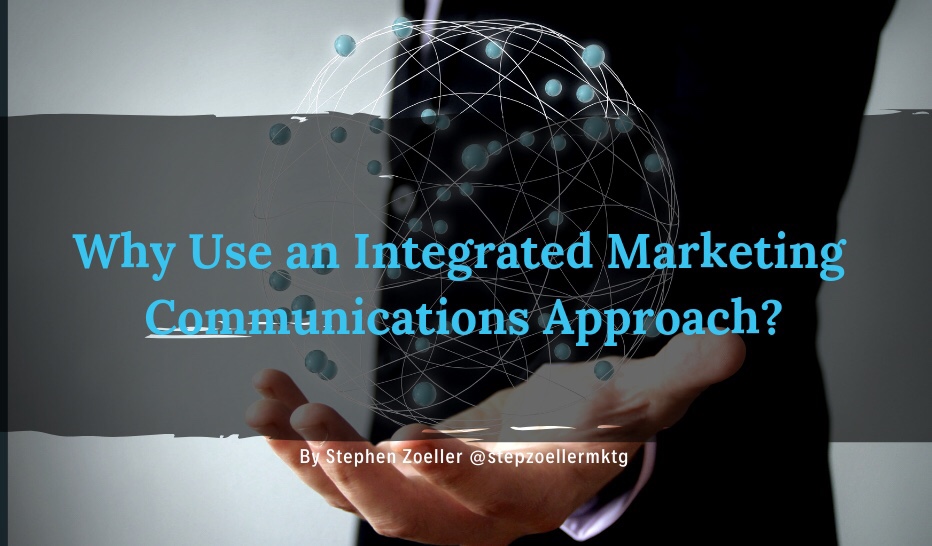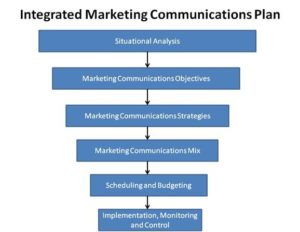Why Use an Integrated Marketing Communications Approach?
In this post, I’ll explain the importance of Integrated Marketing Communications (IMC) and how it can help achieve long-term sustainable results for your organization.
It is a brave new world with rapidly changing technologies, social media, and apps entering the market at a lightning fast-pace that can give you a headache.
Traditional media methods to reach consumers have changed with the Internet and social media adding complexity to the marketing mix.
Traditional media, Internet, and social media provide opportunities to reach consumers in various ways. Brand messages can be inconsistent or get lost across the different media options for your target audience.
If you are not currently using an Integrated Marketing Communications (IMC) approach, you may have had some of the common thoughts and feelings most marketers have without IMC. Ask yourself the following questions, and this will help you determine if IMC is appropriate for your organization.
- Do you feel like your organization is lacking a cohesive marketing strategy?
- Does your company have a single voice in the marketplace?
- Is your marketing outperforming the competition?
- Is quality research and data driving strategy or gut instincts?
The good thing is that all is not lost. In spite of all the technology advances, the heart of any quality marketing effort is a sound strategy. A quality strategy making use of the right technology, tools, and resources is the key component to achieving your goals.
Philip Kotler, one of the legendary figures in marketing provides a great quote that sums up integrated marketing communications:
Making the Case for IMC
It is critical for organizations to use an IMC approach focused on a consistent brand message across all media channels. IMC effectively reaches consumers with the intended message stimulating awareness, creating trial usage, and ultimately achieving brand loyalty for the products or services of an organization.
An effective IMC approach can create a strong brand based on a consistent message strategy projecting a unified voice. Consistent messaging avoids confusion and reinforces the brand with consumers over time and builds greater trust and awareness. An organization’s products or services become top of mind when it comes time to purchase using an IMC approach.
The Current Business Environment
Increased levels of competition and more ways to reach consumers creates a complex set of challenges for organizations in the modern era. The most significant change is the advances in information technology (IT) transforming the way business is conducted and how individuals communicate. IT has provided the mechanism causing the change from mass marketing to a customer focused approach with databases and measurable ways to integrate communications.
It is especially critical in this environment to have an IMC approach to the market with a consistent message to create effective marketing that reaches the intended target.
Benefits of IMC
An IMC approach provides benefits at every level of the organization including:
- Operational level – reduces transaction costs, interdepartmental conflict, and duplication of effort
- Campaign level – creates synergy with the communications mix and provides a higher return on campaign investment vs. the competition
- Brand level – provides clarity and consistency to brand messages to create brand loyal customers
- Customer level – positively impacts consumer awareness, customer attitudes, and customer experiences at every touch point
- Market level – decreases the rate of defection, increases market position, sales, and sales growth
- Financial level – increases the ability to achieve higher sales, sales growth, profitability, return on investment (ROI), and return on brand investment (ROBI) vs. the competition
Brand Strategy First, Then IMC
Forming a well-constructed brand strategy is the first step before IMC can be used. Once a brand strategy is formed, an IMC plan can be created to influence perceptions of the brand across all media and channels. If an organization has a corporate brand with sub-brands (product or service), then IMC provides the ability to achieve a consistent corporate branding across all the sub-brands.
What is IMC?
Let’s take a step back to explain IMC. After the brand building elements are selected, the IMC coordinates and manages the marketing communications. IMC ensures consistent brand messages are used in every internal and external communication and promotes collaboration amongst all stakeholders.
IMC Planning Process
The IMC strategy planning process using the zero-based campaign approach, includes identifying the target audience, performing an environmental analysis (five-forces analysis and SWOT), and determining the marketing communications objectives. The next steps in the IMC process include developing strategies and tactics, deciding on a budget, implementation, and evaluating the IMC plan’s effectiveness.
Alignment, Synergy, Results
The IMC flows from the the mission, vision, and values to the overall business strategy providing the filter to guide every strategic and tactical aspect of the IMC plan. The IMC strategy complements the branding strategy and maintains a consistent message that conveys the right message using the right medium to achieve the pre-defined business goals.
IMC facilitates collaboration and creates synergy across departments or work groups. The increased collaboration leads to reduced bureaucracy and the formation of employee behaviors that lead to business goal attainment. Using IMC offers significant advantages for the company in the form of financial results and the ability to compete at a heightened level with the synergy IMC provides the company.
Nike and IMC

The benefits of a strong brand includes differentiation from its competitors, a barrier to entry, the ability to demand a higher price, and the opportunity to experience higher revenues. Nike is a prestige brand that adds value to its products communicating an upscale image identified by the Nike swoosh logo distinguishing the purchaser as a selective individual.
Image is especially important in the highly sporting goods market with fierce competition from Under Armour, Adidas, and Reebok. These competing brands cannot compare to Nike in terms of consistent brand message over time.
In the case of Reebok, they have changed brand messages several times over the years. Nike’s marketing excellence with a consistent brand message has propelled the company to economic success and established Nike as a prestige brand with significant brand equity.
Conclusion
An Integrated Marketing Communications (IMC) strategy enhances the effectiveness of the branding strategy to use the right message using the medium to achieve your business goals. IMC aligns and synergizes every group and department to collaborate and deliver results. IMC provides the ability to achieve a consistent corporate branding that delivers significant bottom line results.
B2C companies such as Coca-Cola, Red Bull, Starbucks, Apple, American Express, Stonyfield Farm/Danone and newcomer GoPro are great examples of companies that are doing IMC right.
B2B companies such as Intermedia, Datavail, and Rockwell Automation are also using IMC to achieve business and marketing goals. The success of these organizations and many others provides examples and evidence that IMC is a critical differentiator for success.
Using IMC offers significant advantages and a distinct competitive advantage for a company in the form of financial results, and the ability to compete at a heightened level with the synergy IMC provides the company.




